| Exhib. Cat. Weimar 2015 |
71, 74 |
|
|
| Editor | Wolfgang Holler, Karin Kolb |
|---|
| Title | Cranach in Weimar, [Weimar, Schiller-Museum, 3 April - 14 June 2015] |
|---|
| Place of Publication | Dresden |
|---|
| Year of Publication | 2015 |
|---|
|
| Melzer 2015 |
20 |
|
|
| Author | Reinhard Melzer |
|---|
| Title | Die Cranach-Ausstellung im Gotischen Haus in Wörlitz - eine Einführung |
|---|
| Publication | in Kulturstiftung Dessau-Wörlitz, ed., Cranach im Gotischen Haus in Wörlitz, Exhib. Cat. Wörlitz |
|---|
| Place of Publication | Munich |
|---|
| Year of Publication | 2015 |
|---|
| Pages | 16-21 |
|---|
|
| Noble 2015 |
293, 295 |
|
|
| Author | Bonnie Noble |
|---|
| Title | The Woman of Babylon. Seduction Reformation-Style |
|---|
| Publication | in Elke A. Werner, Anne Eusterschulte, Gunnar Heydenreich, eds., Lucas Cranach der Jüngere und die Reformation der Bilder |
|---|
| Place of Publication | Munich |
|---|
| Year of Publication | 2015 |
|---|
| Pages | 290-297 |
|---|
|
| Nurre 2015 |
261-264 |
|
Fig. 4 |
| Author | Anastasia Nurre |
|---|
| Title | Memorializing Christian Authority. Secular Leadership and Lutheran Ideology in 'Epitaph for Johannes Bugenhagen' |
|---|
| Publication | in Elke A. Werner, Anne Eusterschulte, Gunnar Heydenreich, eds., Lucas Cranach der Jüngere und die Reformation der Bilder |
|---|
| Place of Publication | Munich |
|---|
| Year of Publication | 2015 |
|---|
| Pages | 256-265 |
|---|
|
| Rebmann 2015 |
217, 219, 223, 225 |
|
1 |
| Author | Ruben Rebmann |
|---|
| Title | Das Geistliche Cabinet im Dessauer Residenzschloss (1665-1750). Eine Cranach-Sammlung der Vorgänger des Fürsten Leopold III. Friedrich Franz von Anhalt Dessau |
|---|
| Publication | in Kulturstiftung Dessau-Wörlitz, ed., Cranach im Gotischen Haus in Wörlitz, Exhib. Cat. Wörlitz |
|---|
| Place of Publication | Munich |
|---|
| Year of Publication | 2015 |
|---|
| Pages | 217-228 |
|---|
|
| Rhein 2015 |
49 |
|
|
| Author | Stefan Rhein |
|---|
| Title | Lucas Cranach der Jüngere und Philipp Melanchthon. Zu den Spuren einer Wittenberger Beziehung |
|---|
| Publication | in Elke A. Werner, Anne Eusterschulte, Gunnar Heydenreich, eds., Lucas Cranach der Jüngere und die Reformation der Bilder |
|---|
| Place of Publication | Munich |
|---|
| Year of Publication | 2015 |
|---|
| Pages | 42-51 |
|---|
|
| Waterman 2015 |
285, Fn. 28 |
|
|
| Author | Joshua P. Waterman |
|---|
| Title | The Artistic Emergence of Lucas Cranach the Younger |
|---|
| Publication | in Elke A. Werner, Anne Eusterschulte, Gunnar Heydenreich, eds., Lucas Cranach der Jüngere und die Reformation der Bilder |
|---|
| Place of Publication | Munich |
|---|
| Year of Publication | 2015 |
|---|
| Pages | 280-289 |
|---|
|
| Werner 2015 |
9 |
|
|
| Author | Elke Anna Werner |
|---|
| Title | Lucas Cranach der Jüngere und die Reformation der Bilder. Zur Einführung |
|---|
| Publication | in Elke A. Werner, Anne Eusterschulte, Gunnar Heydenreich, eds., Lucas Cranach der Jüngere und die Reformation der Bilder |
|---|
| Place of Publication | Munich |
|---|
| Year of Publication | 2015 |
|---|
| Pages | 8-16 |
|---|
|
| Willig-Stritzke 2015 |
72, 73, 74, 79, 81, 82 |
|
|
| Author | Nadine Willig-Stritzke |
|---|
| Title | "Verlasset euch nicht auff Fürsten; sie sind menschen, die konnen ja nicht helffen..." Lucas Cranach der Jüngere und die Fürsten von Anhalt im Kontext der Quellen |
|---|
| Publication | in Elke A. Werner, Anne Eusterschulte, Gunnar Heydenreich, eds., Lucas Cranach der Jüngere und die Reformation der Bilder |
|---|
| Place of Publication | Munich |
|---|
| Year of Publication | 2015 |
|---|
| Pages | 72-83 |
|---|
|
| Wolf 2015 |
169, Fn. 6, 171, Fn. 22 |
|
|
| Author | Anja Wolf |
|---|
| Title | Die 'Taufe Christi' von 1556. Einblicke in die Arbeitsweise Lucas Cranachs des Jüngeren |
|---|
| Publication | in Elke A. Werner, Anne Eusterschulte, Gunnar Heydenreich, eds., Lucas Cranach der Jüngere und die Reformation der Bilder |
|---|
| Place of Publication | Munich |
|---|
| Year of Publication | 2015 |
|---|
| Pages | 168-179 |
|---|
|
| Oexle 2009 |
53-79 |
|
|
| Author | Otto Gerhard Oexle |
|---|
| Title | Die Memoria der Reformation. Das Dessauer Altarbild Lucas Cranachs des Jüngeren |
|---|
| Publication | in Hans-Joachim Krause, Andreas Ranft, eds., Studien zur mittelalterlichen und frühneuzeitlichen Kunstgeschichte und Geschichte |
|---|
| Place of Publication | Stuttgart |
|---|
| Year of Publication | 2009 |
|---|
| Pages | 53-79 |
|---|
|
| Ermischer 2007 |
44 |
|
|
| Author | Gerhard Ermischer |
|---|
| Title | Cranach im Exil - Porträt einer bewegten Epoche |
|---|
| Publication | in Gerhard Ermischer, Andreas Tacke, eds., Cranach im Exil. Aschaffenburg um 1540. Zuflucht, Schatzkammer, Residenz, Exhib. Cat. Aschaffenburg |
|---|
| Place of Publication | Regensburg |
|---|
| Year of Publication | 2007 |
|---|
| Pages | 13-53 |
|---|
|
| Roch-Lemmer 2007 |
313-325 |
|
|
| Author | Irene Roch-Lemmer |
|---|
| Title | Neue Forschungen zum Dessauer Abendmahlsbild von Lucas Cranach d. J. (1565). Hans-Joachim Krause zum 25. Oktober 2005 |
|---|
| Publication | in Andreas Tacke, ed., Lucas Cranach 1553/2003. Wittenberger Tagungsbeiträge anlässlich des 450. Todesjahres Lucas Cranachs des Älteren |
|---|
| Place of Publication | Leipzig |
|---|
| Year of Publication | 2007 |
|---|
| Pages | 313-325 |
|---|
|
| Chamonikola 2005 B |
27(English version 12] |
|
|
| Author | Kaliopi Chamonikola |
|---|
| Title | Lucas Cranach a ceské zeme/ Lucas Cranach and the Czech Lands |
|---|
| Publication | in Kaliopi Chamonikola, ed., Pod znamením okrídleného hada. Lucas Cranach a ceské zeme, Under the winged Serpent, Lucas Cranach and the Czech Lands, Exhib. Prague 2005 |
|---|
| Place of Publication | Prague |
|---|
| Year of Publication | 2005 |
|---|
| Pages | 13-33 (6-15) |
|---|
|
| Melzer 2005 |
48, 57 Fn. 11 |
|
|
| Author | Reinhard Melzer |
|---|
| Title | Cranach in Wörlitz. Das Gotische Haus als frühe Sammlungsstätte altdeutscher Malerei |
|---|
| Publication | in Harald Marx, Ingrid Mössinger, Karin Kolb, ed., Cranach. Exhib. Cat. Chemnitz |
|---|
| Place of Publication | Cologne |
|---|
| Year of Publication | 2005 |
|---|
| Pages | 44-58 |
|---|
|
| Schulze 2004 |
186-191 |
|
|
| Author | Ingrid Schulze |
|---|
| Title | Lucas Cranach d. J. und die protestantische Bildkunst in Sachsen und Thüringen. Frömmigkeit, Theologie, Fürstenreformation |
|---|
| Place of Publication | Bucha near Jena |
|---|
| Year of Publication | 2004 |
|---|
|
| Boettcher 2003 |
62-64 |
|
|
| Author | Susan R. Boettcher |
|---|
| Title | Von der Trägheit der Memoria. Cranachs Lutheraltarbilder im Zusammenhang der evangelischen Luther-Memoria im späten 16. Jahrhundert |
|---|
| Publication | in Joachim Eibach, Marcus Sandl, eds., Protestantische Identität und Erinnerung. Von der Reformation bis zur Bürgerrechtsbewegung in der DDR |
|---|
| Place of Publication | Göttingen |
|---|
| Year of Publication | 2003 |
|---|
| Pages | 47-69 |
|---|
|
| Findeisen 2001 |
171-186 |
|
|
| Author | Peter Findeisen |
|---|
| Title | Bildnisse des Fürsten Wolfgang und Joachim von Anhalt Zerbst, Dessau und Köthen |
|---|
| Publication | in, ES THVN IHER VIEL FRAGEN. Kunstgeschichte in Mitteldeutschland. Hans-Joachim Krause gewidmet |
|---|
| Series | Beiträge zur Denkmalkunde in Sachsen-Anhalt |
|---|
| Volume | 2 |
|---|
| Place of Publication | Petersberg |
|---|
| Year of Publication | 2001 |
|---|
| Pages | 171-186 |
|---|
|
| Rabenau 1997 |
2-4 |
|
1 |
| Author | Konrad von Rabenau |
|---|
| Title | Bildnisse von Philipp Melanchthon und Fürst Georg von Anhalt auf den Büchern der Reformationszeit |
|---|
| Journal | Dessauer Kalender |
|---|
| Issue | 41 (1997) |
|---|
| Year of Publication | 1997 |
|---|
| Pages | 2-19 |
|---|
|
| Mieth 1993 |
28-39 |
|
|
| Author | Andreas Mieth |
|---|
| Title | Die Restaurierung der Tafelgemälde |
|---|
| Publication | in Evangelisches Pfarramt St. Johannis und St. Marien, Dessau, ed., Bilder erleben. Tafelbilder Lucas Cranach des Älteren und des Jüngeren laden ein. St. Johanniskirche Dessau |
|---|
| Place of Publication | Dessau |
|---|
| Year of Publication | 1993 |
|---|
| Pages | 28-36 |
|---|
|
| Schade 1993 A |
21-27 |
|
|
| Author | Werner Schade |
|---|
| Title | Die drei Gemälde |
|---|
| Publication | in Evangelisches Pfarramt St. Johannis und St. Marien, Dessau, eds., Bilder erleben. Tafelbilder Lucas Cranach des Älteren und des Jüngeren laden ein. St. Johanniskirche Dessau |
|---|
| Place of Publication | Dessau |
|---|
| Year of Publication | 1993 |
|---|
| Pages | 21-27 |
|---|
|
| Schade 1974 |
95, 96, 390 |
|
pl. 250 |
|
|
| Schade 1968 B |
70-71 |
|
|
| Author | Werner Schade |
|---|
| Title | Die Epitaphbilder Lucas Cranach d. J. |
|---|
| Publication | in Bozena Steinborn, ed., Ze Studiów nad Sztuka XVI Wieku na Slasku i w Krajach Sasiednich(Materialy z konferencji urzadzonej przez Muzeum Slaskie we Wroclaw 10 i 17 grudnia 1966 roku) |
|---|
| Place of Publication | Breslau |
|---|
| Year of Publication | 1968 |
|---|
| Pages | 63-76 |
|---|
|
| Thulin 1955 |
96-109 |
|
|
| Author | Oskar Thulin |
|---|
| Title | Cranach-Altäre der Reformation |
|---|
| Place of Publication | Berlin |
|---|
| Year of Publication | 1955 |
|---|
|
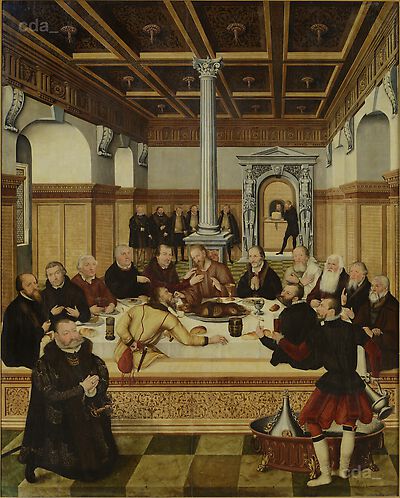


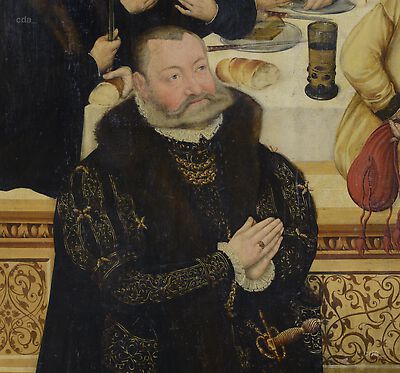

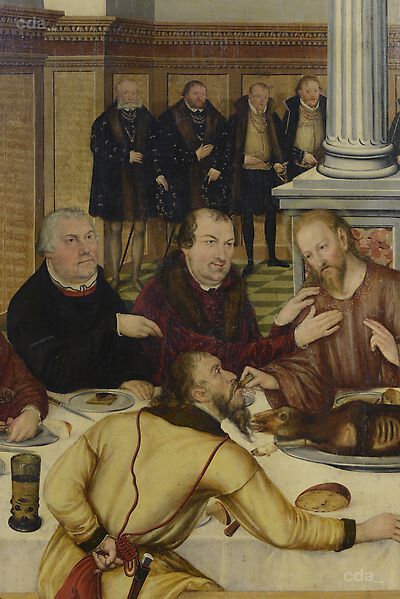
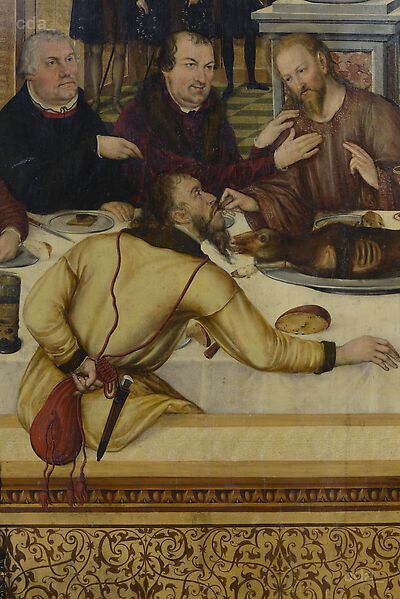
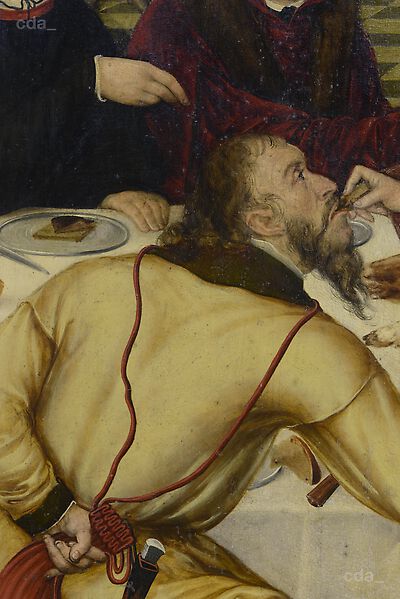
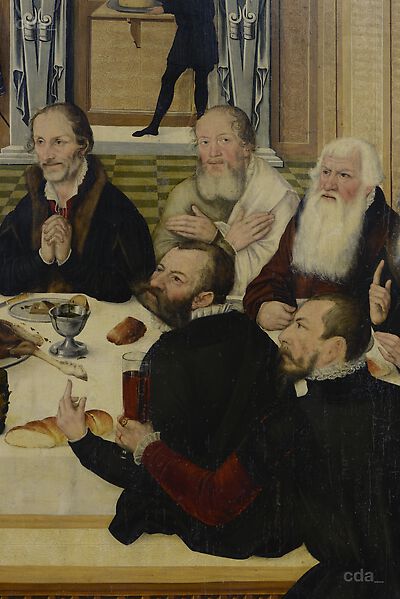
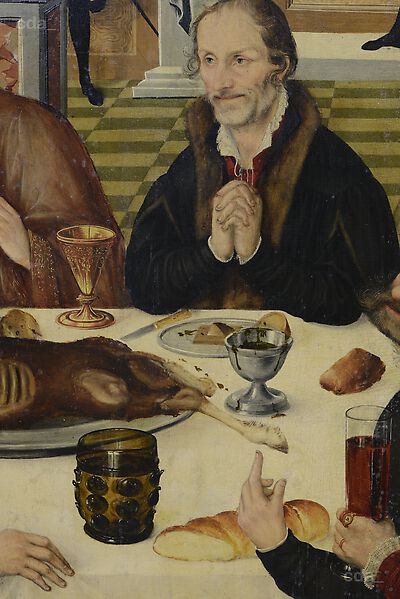

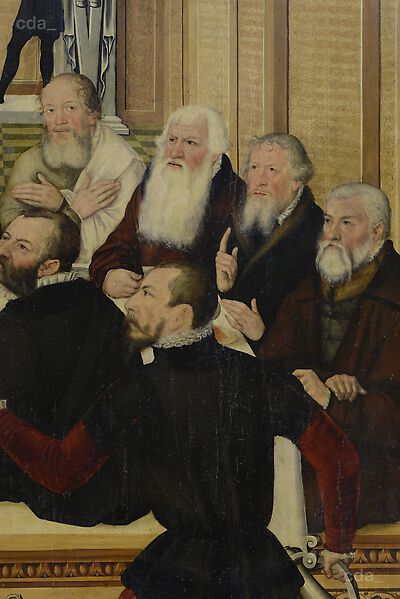
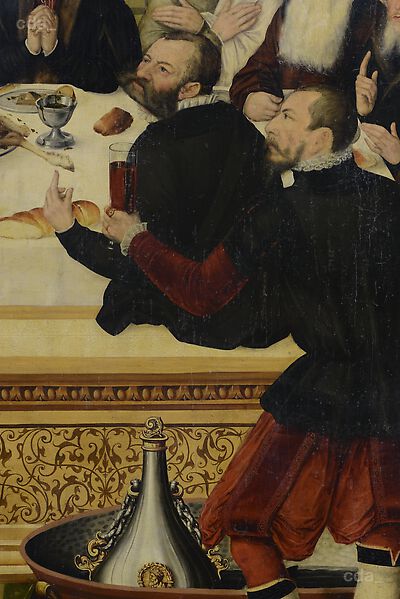

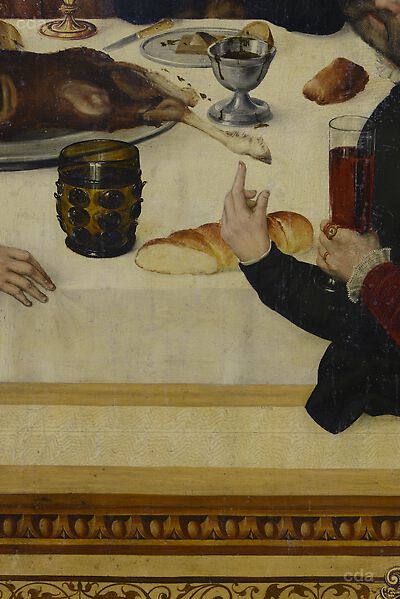
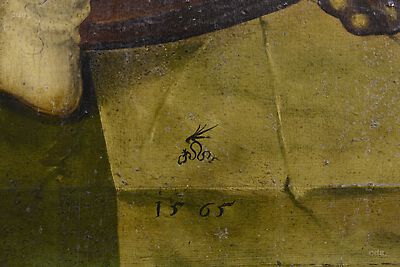
![The Last Supper [Epitaph for Prince Joachim of Anhalt]](https://lucascranach.org/imageserver-2022/DE_KAK_KAK001_FR-none/01_Overall/DE_KAK_KAK001_FR-none_2015-03_Overall-s.jpg)